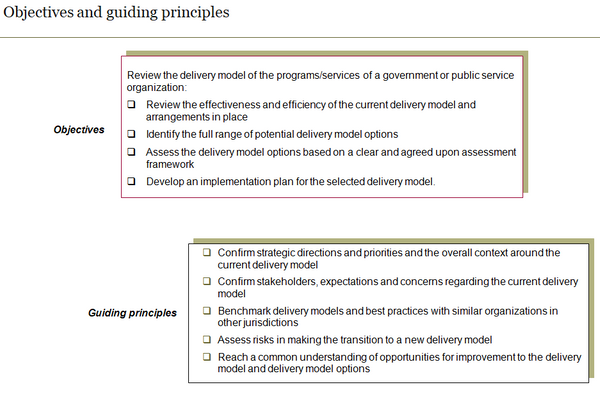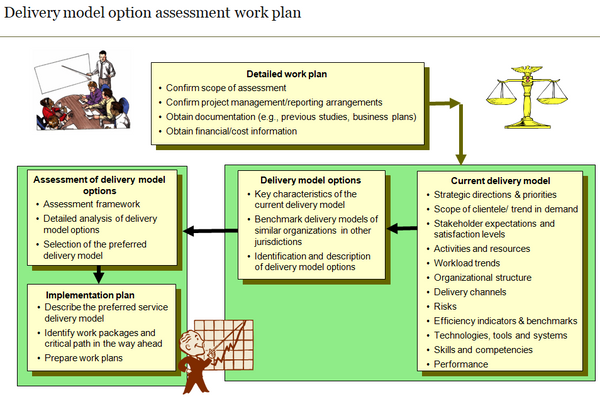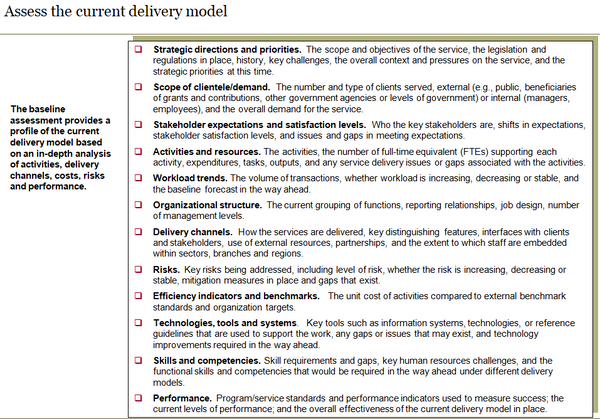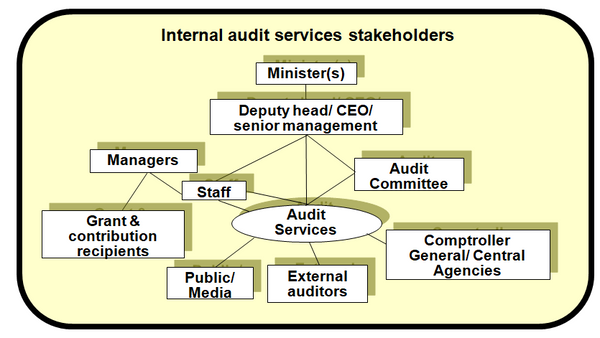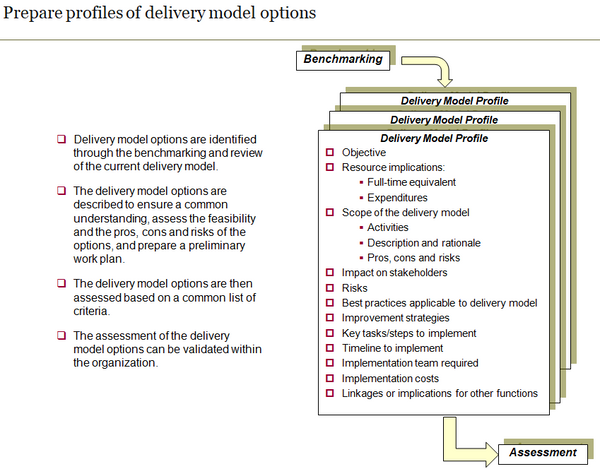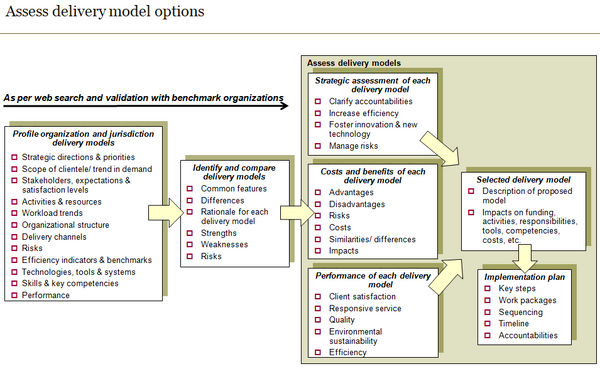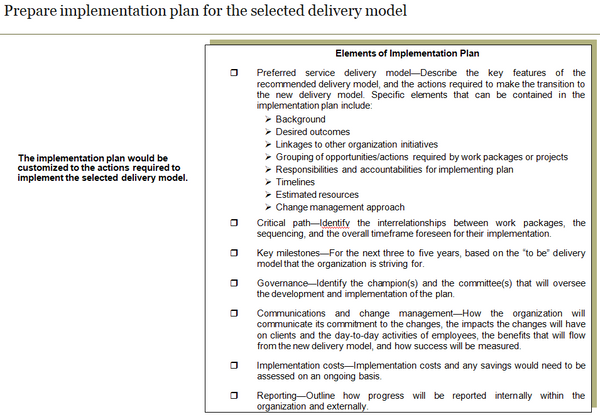Audit Services Delivery Model Option Assessment Tool (8 slides)
Assess delivery model options for the internal audit function in a government agency
Internal audit service delivery assessment toolkit
The Audit Services Delivery Model Option Assessment Tool (8 slides in PowerPoint) provides a summary work plan and delivery model options for the internal audit services function. The slides include:
-
A checklist to help assess the current delivery model
-
Variations in the delivery model for audit services based on the scope of the audit function (e.g., assurance, advisory, risk oversight, values and ethics), whether the audit work is conducted in-house or contracted out, and whether the audits are led by the organization or externally as part of horizontal government-wide audits (see preview charts)
-
The typical contents of the profiles used to describe the delivery model options
-
An assessment approach
-
Typical elements of the implementation plan to make the transition to the selected delivery model.
Purchase the toolkit and you will receive an email with a link to download the Audit Services Delivery Model Option Assessment Tool (8 slides in a PowerPoint editable format) as well as the Delivery Model Option Assessment Guide (12 pages in Word).
Key service delivery management considerations for the internal audit function
Key considerations in designing the audit services delivery model include:
-
The independence of the audit function, and mechanisms in place to ensure independence
-
The risk-based approach used to establish audit priorities and develop the audit plan
-
The role of the audit committee
-
The scope of activities carried out by the audit function (e.g., assurance, advisory, risk oversight, values and ethics)
-
The mix of audits done in-house by the organization versus external audits (e.g., horizontal audits carried out by the comptroller general, financial audits)
-
The focus of the audits on ensuring compliance versus assessing the efficiency and effectiveness of program delivery
-
The mix of internal and/or external resources used to conduct audits (i.e., the percentage of audit work contracted out)
-
Whether the audit function is grouped organizationally with program evaluation.








